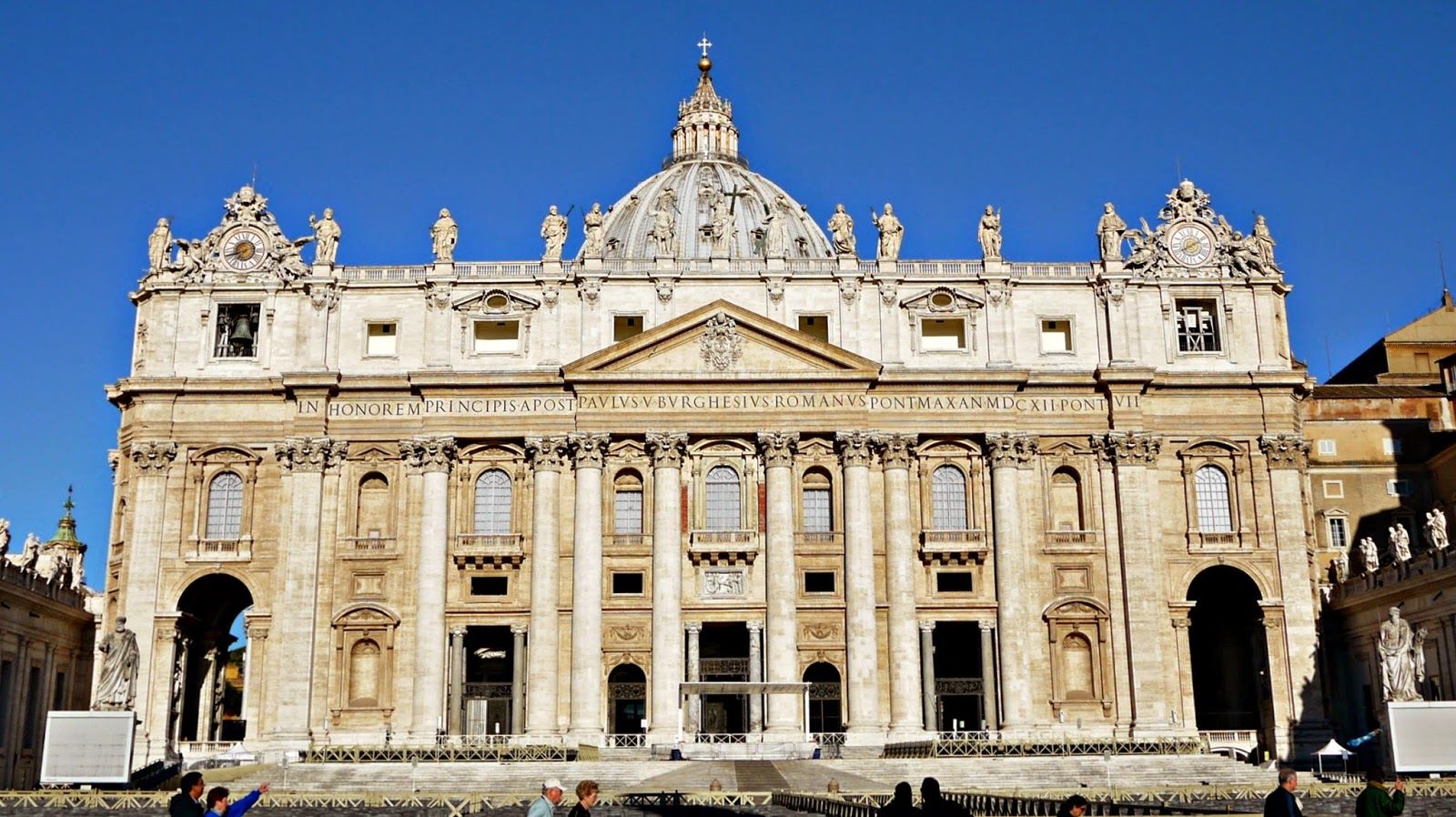Home>Theology and Spirituality>How To Say Catholic Grace Before A Meal


Theology and Spirituality
How To Say Catholic Grace Before A Meal
Published: March 7, 2024
Peter Smith, Editorial Director at Christian.net, combines deep insights into faith, politics, and culture to lead content creation that resonates widely. Awarded for his contributions to religious discourse, he previously headed a major organization for religious communicators, enhancing dialogue on faith's societal impacts.
Learn the traditional Catholic grace before meals and the significance of this practice in theology and spirituality. Discover the spiritual nourishment of saying grace.
(Many of the links in this article redirect to a specific reviewed product. Your purchase of these products through affiliate links helps to generate commission for Christian.net, at no extra cost. Learn more)
Table of Contents
Understanding the Importance of Saying Grace
Saying grace before a meal is a longstanding tradition in many religious and cultural practices, including Catholicism. It is a moment of reflection and gratitude, where individuals express their appreciation for the food they are about to receive. This act of giving thanks is not only a way to acknowledge the source of the meal, but it also serves as a reminder of the blessings and abundance in one's life. In the Catholic faith, saying grace is a way to honor God's provision and to cultivate a spirit of humility and appreciation. It is a simple yet powerful practice that fosters a sense of mindfulness and reverence for the nourishment that sustains us.
Read more: 15 Catholic Prayers Before Meals
Traditional Catholic Grace Before Meals
-
Sign of the Cross: The traditional Catholic grace before meals often begins with the sign of the cross. This is a physical and symbolic gesture of invoking the presence of the Holy Trinity – the Father, the Son, and the Holy Spirit – as a way to sanctify the meal and give thanks for the blessings received.
-
Blessing of the Food: Following the sign of the cross, a prayer of blessing is said over the food. This prayer acknowledges God as the provider of the nourishment and expresses gratitude for His abundance and generosity. It is a moment to recognize the divine source of all sustenance and to honor the act of sharing a meal with others.
-
Saying the Grace: The traditional Catholic grace before meals often includes a specific prayer, such as the "Bless us, O Lord" prayer. This prayer is a humble plea for God's blessing and gratitude for the food that has been provided. It is a way to invite God's presence into the meal and to seek His continued provision and guidance.
-
A Moment of Reflection: In addition to the spoken prayers, the traditional Catholic grace before meals also provides a moment for silent reflection. This allows individuals to offer their personal thanks and intentions, as well as to contemplate the significance of the meal in the context of their faith and daily lives.
-
Unity and Communion: Lastly, the traditional Catholic grace before meals serves as a unifying practice, bringing together individuals in a shared expression of gratitude and reverence. It reinforces the communal aspect of dining together and emphasizes the spiritual connection that is fostered through the act of sharing a meal.
In summary, the traditional Catholic grace before meals encompasses a series of rituals and prayers that not only express gratitude for the food being received but also serve to sanctify the act of eating as a spiritual and communal experience. It is a time-honored tradition that reflects the values of humility, gratitude, and reverence within the Catholic faith.
Modern Adaptations of Catholic Grace
-
Personalized Expressions of Gratitude: In modern times, there has been a shift towards more personalized expressions of grace before meals within the Catholic tradition. Individuals may choose to offer spontaneous prayers of thanksgiving, expressing their gratitude in their own words and from the depths of their hearts. This adaptation allows for a more intimate and authentic connection with the act of giving thanks for the meal.
-
Incorporating Cultural and Linguistic Diversity: With the increasing diversity within the Catholic community, there has been a growing recognition of the importance of incorporating cultural and linguistic diversity into the practice of saying grace before meals. This may involve reciting prayers in different languages or incorporating cultural customs and traditions that reflect the richness of the Catholic faith across various communities.
-
Embracing Inclusive and Contemporary Language: Modern adaptations of Catholic grace also involve the use of inclusive and contemporary language in the prayers offered before meals. This includes acknowledging the interconnectedness of all beings, expressing gratitude for the Earth and its bounty, and recognizing the importance of stewardship and care for the environment in the context of giving thanks for the meal.
-
Mindful Eating and Gratitude Practices: In response to the growing interest in mindfulness and holistic well-being, modern adaptations of Catholic grace before meals may incorporate elements of mindful eating and gratitude practices. This may involve taking a moment of silence to reflect on the interconnectedness of the food with the labor of those who produced it, the impact on the environment, and the nourishment it provides to the body and soul.
-
Integration of Technology and Media: With the prevalence of technology and media in daily life, modern adaptations of Catholic grace before meals may involve the use of digital resources, such as apps, websites, or social media platforms, to access prayers, reflections, and resources related to giving thanks before a meal. This adaptation reflects the integration of faith practices with contemporary modes of communication and engagement.
In essence, modern adaptations of Catholic grace before meals reflect a dynamic and inclusive approach to expressing gratitude within the Catholic tradition. These adaptations embrace diversity, inclusivity, and contemporary expressions of thanksgiving, while honoring the timeless values of humility, reverence, and communal sharing that are central to the practice of saying grace before a meal.
Tips for Incorporating Catholic Grace into Daily Meals
-
Establish a Routine: Set a consistent time for saying grace before meals, whether it's during family dinners, gatherings with friends, or even when dining alone. Creating a routine helps to cultivate a sense of mindfulness and gratitude before partaking in the meal.
-
Involve Children: Encourage the participation of children in saying grace before meals. This can be done by teaching them simple prayers or inviting them to share their own expressions of gratitude. Involving children in this practice from a young age instills in them the value of thankfulness and spiritual connection with the act of eating.
-
Create a Sacred Space: Designate a specific area in the dining area or kitchen where the family can gather to say grace before meals. This can be adorned with religious symbols, candles, or other items that hold spiritual significance, creating a sacred space for the practice of giving thanks.
-
Explore Different Prayers: While traditional Catholic prayers are meaningful, consider exploring a variety of prayers from different cultures and traditions. This can enrich the experience of saying grace and foster a deeper understanding of the universal value of gratitude across diverse faiths.
-
Express Personal Gratitude: Encourage each individual to express their personal gratitude before the meal. This can be done through spontaneous prayers, reflections, or simply taking a moment of silence to offer thanks for the nourishment and blessings received.
-
Incorporate Gratitude Beyond Meals: Extend the practice of gratitude beyond mealtime by incorporating it into other daily routines, such as morning or bedtime rituals. This helps to reinforce the importance of thankfulness as a continuous and integral part of daily life.
-
Share Stories of Gratitude: Take the opportunity to share stories of gratitude and blessings during the meal. This can be a time for individuals to express their appreciation for specific events, people, or experiences, further enriching the practice of saying grace before meals.
-
Embrace Spontaneity: While having a routine is important, allow for moments of spontaneous gratitude. Encourage individuals to offer thanks in their own words, expressing their immediate feelings of appreciation and acknowledgment for the meal and the company.
-
Reflect on the Source of the Meal: Encourage reflection on the journey of the meal from its source to the table. This can involve discussing the origins of the food, the labor of those involved in its production, and the interconnectedness of all beings in the cycle of nourishment.
-
Practice Gratitude in Adversity: Use the practice of saying grace before meals as an opportunity to express gratitude even in challenging times. This can foster resilience, hope, and a sense of perspective, reminding individuals of the enduring blessings amidst difficulties.
Incorporating Catholic grace into daily meals is not only a spiritual practice but also a way to foster a deeper sense of connection, gratitude, and mindfulness in the act of eating. These tips offer practical and meaningful ways to enrich the experience of saying grace before meals, making it a cherished and integral part of daily life.















